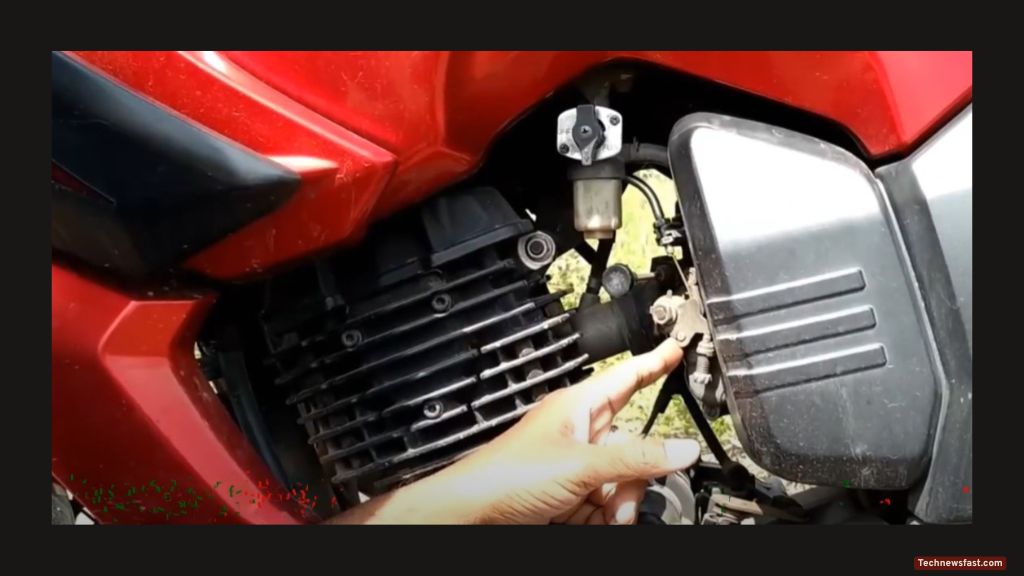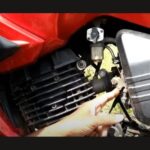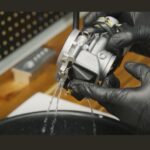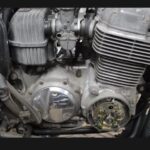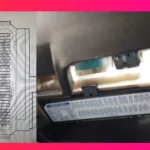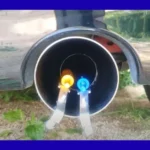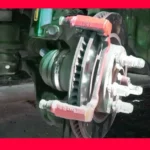Dealing with a misfiring engine is one of the most annoying problems on a motorcycle or bike. If you turn the key, twist the throttle, and your engine sputters, stumbles, or shakes, you’re facing a common issue that can ruin your ride and leave you guessing what’s wrong.
As a mechanic who’s seen plenty of these issues, I know how frustrating it can be. This guide will help you spot, understand, and fix those misfires—whether you’re maintaining your own ride or just want to know what to expect at the repair shop.
What Is an Engine Misfire? Understanding the Basics
When I think about how an engine should run, I picture a band playing together, each musician on beat. In a bike or car engine, each cylinder should fire at just the right time, igniting the fuel-air mix and creating power. When one or more “musicians” miss their cue—meaning a cylinder fails to ignite—that’s an engine misfire.
Common Motorcycle Misfire Symptoms
Look for these signs if you think your engine is misfiring:
- Rough idling or shaking when stopped
- Loss of power, slow acceleration
- Reduced fuel mileage
- Check engine light switching on
- Bike misfiring on acceleration
- Unusual sounds: “popping,” “spitting,” or “coughing” from the engine or exhaust
Think of it like listening to an orchestra when one drummer keeps missing the beat—the music (and your ride) stumbles.
Motorcycle misfire sounds range from sharp pops to dull thuds. You might hear these noises, especially at low speeds, when idling, or while accelerating.
Why Do Engine Misfires Happen?
Misfiring isn’t just one problem. It’s a result of something going wrong with combustion in the engine. If you want to understand how to repair a bike with an engine misfiring problem, you need to know where things break down. Most causes fall into these groups:
Ignition System Issues
The ignition system creates the spark that lights your engine’s fuel. If any piece of the system is weak or worn, you could get a misfire.
Common Ignition Problems
- Worn-out spark plugs
- Spark plugs ignite the fuel-air mix. Over time, they build up carbon or oil, or just wear out, so the spark gets weak or inconsistent.
- Faulty spark plug wires
- Old or damaged wires can leak electricity, sending less to the plugs.
- Bad ignition coils
- Coils “boost” battery voltage for the spark. When they go bad, the spark can drop out in one or more cylinders.
It’s like having a drummer with a broken stick—the timing and sound just aren’t right.
If you’re riding a Honda or another popular bike, regular spark plug changes are key for smooth running. Ignition coil failures aren’t rare either, so checking these first can save you time.
Fuel System Problems
- Clogged fuel injectors
- Injectors deliver fuel in a fine mist. They can clog from carbon deposits or dirty fuel, leading to a “lean” mixture (not enough fuel).
- Failing fuel pump
- The pump needs to deliver steady pressure. If it gets weak, you’ll lose power, especially at high speeds.
- Contaminated or poor-quality fuel
- Bad gas can make engines misfire, run rough, or even stop.
When your bike runs lean, it’s like trying to start a campfire with too much wind and not enough kindling—no strong flame, just sputter. This is often a reason for motorcycle misfire at high rpm or when you hit the throttle.
Signs Your Fuel System Needs Attention
- Bike misfiring on acceleration
- Motorcycle misfire at low rpm or idle
- Repeated stalling when opening the throttle
Regular fuel system cleaning and using quality gas helps prevent these issues.
Other Causes of Motorcycle Engine Misfires
There’s more that can go wrong than just spark or fuel. Here are other problem areas to keep in mind.
Vacuum Leaks
Vacuum leaks let extra air into the engine, which throws off the fuel mix and causes lean running. Air can sneak in around old hoses or cracked gaskets.
Think about blowing on a campfire until it fizzles out—too much air, not enough fuel.
Compression Problems
Engine compression is all about how well the cylinder can “squeeze” the fuel-air mixture before the spark hits. If there’s a leak, the cylinder won’t build enough pressure.
What Causes Low Compression?
- Worn piston rings
- Leaky or burned valves
- Blown head gas ket
It’s like trying to pop a balloon with a pinhole—you never get enough pressure to make it work.
Motorcycle misfire at low rpm often points to compression loss. It can cause rough idle, hard starts, or visible smoke from the exhaust.
Timing Issues
The timing chain or belt ensures valves open and close when they should. When chains stretch or jump, or a belt skips teeth, the ignition timing gets messed up.
Timing issues can cause:
- Engine bucking or hesitation
- Sudden loss of power
- Backfiring or popping noises
Ignoring timing can lead to big engine damage, so always check timing components if you spot these signs.
Carbon Buildup and Dirty Injectors
Over time, injectors can get clogged with carbon or varnish. When they can’t spray fuel evenly, your engine doesn’t get the power it needs.
- Dirty injectors = weak acceleration, stumbling, repeat misfires
- The bike may cough or stutter, especially at low speeds
For Honda bikes and other motorcycles, regular injector cleaning is a good idea to avoid these headaches.
ECM and Sensor Problems
Modern bikes use an engine control module (ECM) and various sensors to keep everything in sync.
Key Sensors:
- Crankshaft position sensor
- Camshaft position sensor
If these sensors send bad info or fail, the ECM can mistime the spark and fuel injection, causing misfires.
The ECM is like the conductor of your orchestra—if it gets the wrong cues, everyone falls off rhythm.
Quick Guide: Motorcycle Misfire Symptoms and What They Mean
- Bike misfiring on acceleration: Usually fuel delivery or spark problem
- Motorcycle misfire at low RPM: Check for vacuum leaks, low compression, or spark issues
- Motorcycle misfire at high rpm: Fuel pump or injector issues likely
- Motorcycle misfire sound: Popping, coughing, or “dead” thuds point to misfire
- Stumbling on idle: Often air leaks or worn spark plugs
How to Repair a Bike with Engine Misfiring Problem
Now that you know why misfires happen, let’s talk about how to repair a bike with an engine misfiring problem. The approach is the same for most makes, including Honda.
Step 1: Diagnose the Symptoms
- Listen for the motorcycle misfire sound—note if it’s worse at idle, at high rpm, or on acceleration.
- Check the check engine light and use a code reader if you have one. This can point you to the cylinder or system at fault.
Step 2: Inspect and Replace Spark Plugs
- Remove each plug and check for fouling (oil, carbon, soot).
- Replace plugs if they look worn. Choose plugs recommended for your bike’s make (like Honda).
Step 3: Check Ignition Wires and Coils
- Look for cracked, damaged, or old wires.
- Inspect ignition coils for cracks or burned spots. Replace if needed.
Step 4: Examine Fuel System
- Use a fuel injector cleaner or have the injectors cleaned if you suspect clogging.
- Make sure the fuel pump is delivering the proper pressure—low pressure points to a bad pump.
- Drain old fuel if there’s a chance it’s contaminated.
Step 5: Check for Air and Vacuum Leaks
- Look for cracked or loose vacuum hoses.
- Spray soapy water around the intake while the engine runs—bubbles mean a leak.
Step 6: Test Compression
- Use a compression gauge to check each cylinder. If compression is low in one, it may point to worn rings or valves.
Step 7: Inspect Timing Chain/Belt
- Check for slack, wear, or misalignment.
- If your engine feels “off” or you hear rattling, get the timing checked or replaced.
Step 8: Review ECM and Sensors
- Scan for codes related to the crankshaft or camshaft sensor.
- Replace faulty sensors as needed, especially if your misfire comes and goes without a clear cause.
Bonus Step: How to Repair a Bike with Engine Misfiring Problem Without Expensive Tools
If you don’t have fancy gear, start simple. Swap spark plugs, inspect wires, and use a can of injector cleaner in your fuel. Keep your filters changed and look for obvious loose hoses.
How to Repair a Bike with Engine Misfiring Problem: Honda
Honda bikes tend to be reliable, but even they misfire sometimes. The steps above still apply, but pay close attention to routine spark plug maintenance and use only recommended fuel injectors and plugs.
If you own a fuel-injected Honda, make sure to clean your injectors and keep an eye on fuel pump function. Carbureted Honda models may need vacuum line checks and carb cleaning.
Quick Tips to Prevent Motorcycle Misfires
- Change spark plugs and wires at regular intervals
- Use quality gasoline and add injector cleaner as needed
- Check fuel filters and air filters every few months
- Warm up your bike before hard accelerations, especially in cold weather
- Keep sensors and ECM connections clean and dry
Conclusion
Misfiring engines don’t have to be a mystery. Now you know the main causes—ignition system troubles, fuel issues, air leaks, bad compression, timing problems, injector clogs, and sensor faults. Motorcycle misfire symptoms show up in sounds, power loss, hard starts, and rough running at high or low RPM.
Read also.
